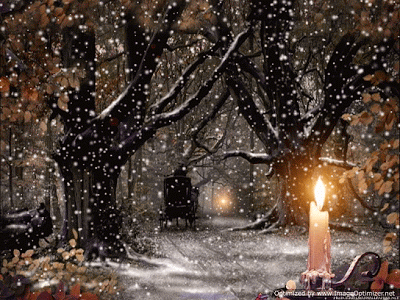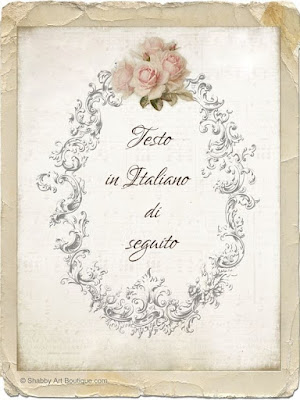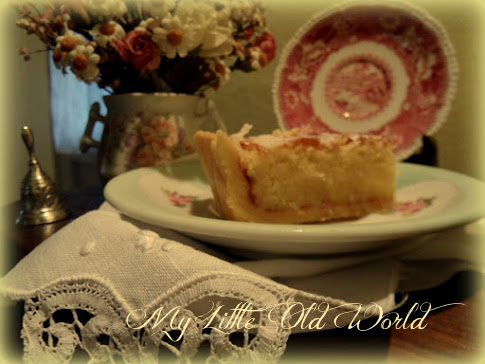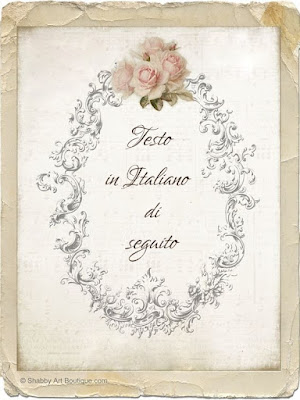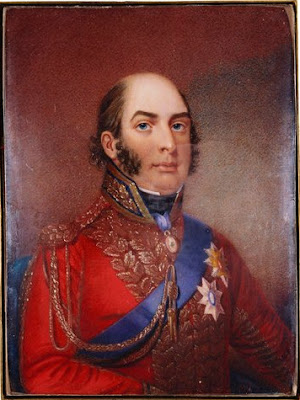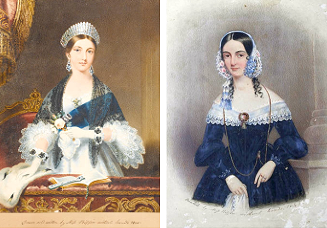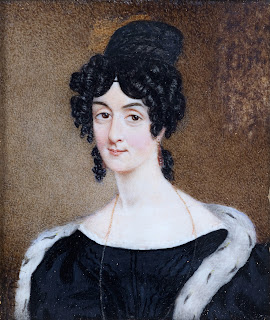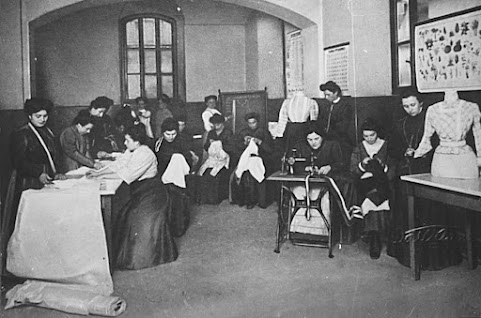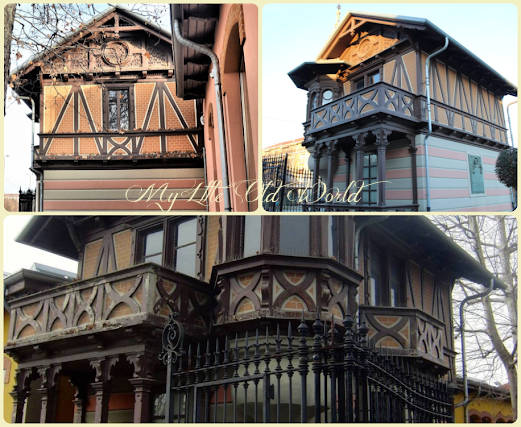When we think about the Victorian age we remind of the etiquette that governed it and the good manners that were cradled by it, the luxury of hunting parties, the patrician residences, theaters, concerts and aristocratic ladies as well as something like a starting of well-being also favored by the industrial revolution; but the Victorian age wasn't all in this.
Unfortunately, an extreem poverty very heavily weighed on a large part of the British population, indeed, let's circumscribe the speech to London, where starvation and hardships led to high mortality rates both among adults and among children.
Victorian London was living an economic boom, but one that left the poorest behind...
It was the winter of 1843.
Long after the sober folks had gone to bed, Charles Dickens walked throug the streets of London.
Unaware of time and place, he would walk fifteen or twenty miles a night, his head filled with thoughts about his latest project which was nearly finished.
A Christmas Carol was born of an idea that the best way to bring about awareness for the plight of the poor was through telling stories which they were the main charachters of.
People loved stories.
Dickens had considered the idea of writing pamphlets and essays, but these were not the ways to reach people’s hearts.
A few weeks earlier, his friend the Baroness Burdett-Coutts had considered donating to the system of religiously-inspired schools known as the “Ragged Schools”.
She had asked Dickens if he would visit the school at Saffron Hill in London and relay his impressions.
Dickens was shocked with what he saw.
I have seldom seen in all the strange and dreadful things I have seen in London and elsewhere, anything so shocking as the dire neglect of soul and body exhibited in these children.
(Mackenzie, Dickens, Life of Charles Dickens, Inktank Publishing, Verlagsgruppe MusketierVerlag GmbH. Bremen, 2020, English edition by R. Shelton, pp. 143-44).
We have to say that it was his personal experience that imbued Dickens with a sense of duty to help the poor.
Growing up, his father, John Dickens, was imprisoned in Marshalsea debtors prison, while Charles, aged 12, was forced to leave school and work in a blacking factory (he wen to work to Warren's Blacking Factory, a warehouse where they prepared lampblack, a black paste or polish, especially that used for giving a black finish to shoes, metals, etc.).
Dickens at the Blacking Warehouse, drawing by unknown author
Before the Bankruptcy Act of 1869, debtors in England were routinely imprisoned at the pleasure of their creditors.
Memories of this period would haunt Dickens for the rest of his life.
Having lived poverty on his shoulders he made himself a spokesperson through his novels knowing that there were people who were living even worse than he did.
In fact towards the end of the Victorian age that the problem of poverty, and the consequent depravity, became decidedly serious and urgent to solve.
Today we cannot even imagine the conditions in which most Londoneers lived in the East End and probably even Dickens knew that the situation will grow even more acute during 1870s-80s, when 'The Long Depression' will bore down on the economy.
‘Four penny coffins’ were a relative luxury compared to the alternatives!
Furtermore, to worsen matters, large areas of lower-income housing across the capital had been destroyed to make way for railroads and the creation of broad new thoroughfares, such as Shaftesbury Avenue, crowding thus London's poor in fewer and more densly packed spaces.
Whitechapel was one of the most notorious of these, but was by no means the only sink of poverty in the capital: pockets of destituition, crime and misery flourished throughout the metropolis.
Studies of those years reveal that a significant percentage of the inhabitants of Whitechapel were identified as "poor", "very poor" or "semi-criminal".
The throbbling dark heart of the district was Spitalfields,
but even the police feared Dorset Street, Throw Street, Flower and Dean Street and the small thoroughfares contiguous to them.
In Whitechapel alone there were 233 common lodging houses, which accomodated an estimated 8.530 homeless people. Naturally those on Dorset Street, Throw Street, Flower and Dean Street bore the worst reputation.
Four pence per night could buy someone a single hard, flea-hopping bed in a stifling, stinking dormitory. Eight pence could buy an equally squalid double bed with a wooden partition around it. There were single-sex lodging houses, though those that admitted both sexes were aknowledged to be the more morally degenerate. All lodgers were entitled to make use of the communal kitchen, which was open all day and late into the night. Residents used this as a gathering place cooking meager meals and quaffing tea or beer with one another using their rude manners and horrific languages which became easily proper of the children too.
However it was the violent behavior, degrading filth and overflowing toilets, in addition to the open displays of nakedness, free sexual intercourse, drunkenness and child neglect to which social investigators and riformers truly objected.
In the "doss house" everything offensive about the slum was concentrated under one roof; most families shared in fact one room where were people lived squeezed together.
One bed may have sufficed for a entire household, with younger children sleeping on makeshift truckle beds stowed beneath. A table and a few chairs served as a parlour, a dining room and as a wardrobe; every corner would contain something for use, from brooms to pot to buckets to sacks of onions and coal.
Gustave Doré, A Poor-House, 1869
Parents, children, siblings, and members of the extended families dressed, washed, engaged in sex, and if no "adjacents conveniences" were available, defecated in full view of one another (please forgive me if I'm so frank...): as one family member prepared a meal, a sick child with a raging fever might be vomiting into a chamber pot beside them , while a parent or sibling stood for a half-naked, changing their clothes.
Husbands and wives made future children while lying beside present ones!
even at a rent of four shillings a week, these buildings had little to reccomend them.
Tenants might expect damp interioirs, soot-blackening ceilings with peeling plaster, rotting floorboards, and broken or ill-fitting windows with gaps that allowed in the rain and the wind.
However, what concerned the inhabitants most frequently was not the crowded living conditions or the ramshackle buildings, but rather access to clean water, sufficient drainage and fresh air...
But let's come back to our Dickens at to his bad experiences during his second childhood: it was the year 1824 when his father and his mother were moved to Marshalsea debtors' prison south to the River Thames and he was sent to North London, to the despised Bayham Street, to lodge, along with three other unwanted children, with an old woman called Mrs Roylance, who had once boarded children at Brighton. The thing which was heavier for him to stand was that not only he was separated from his family, but that he had to live on the opposite side of the river and of the city.
The characters of Dickens' novels present their poverty as a reality to which they seem to have almost adapted, so much it is usual for them, but if this illustrious writer gives voice to the protagonists of the pages of his masterpieces, painters such as Sir Samuel Luke Fieldes, William Powell Frith, Augustus Edwin Mulready and many others gave a face on their canvases to the most needy and disadvantaged whom they saw wandering the streets.
Augustus Edwin Mulready, Uncared for, 1871
William Powell Frith, Poverty and Wealth, 1888
Frank Holl, Newgate: Committed for Trial,1878, oil on canvas. Reproduced courtesy of Royal Holloway, University of London.
Augustus Edwin Mulready, The Flower Sellers, 1889
And probably it was just the writer Queen Victoria loved most and whose novels read as first, who touched har heart: the Queen came to argue that the so-called immorality of the poor classes could not be compared to that of the wealthy classes, the first being dictated by necessity, the second based on ethical choices governed by the waste of money, not by its total lack. It was with this in mind that she, together with Prince Consort Albert, gave birth to the FUND FOR THE IMPROVEMENT OF WORKING CLASSES, fed by capitals coming from their own annuities.
And this was the first step towards the realization of a series of social reforms, not least that of the abolition of the tax on beer, which for the poor was almost a source of livelihood, and the imposition of that on wine, which rich people could afford to pay without making great sacrifices and efforts. Other important reforms on social field will included legislation on child labour, safety in mines and factories, public health, the end of slavery in the British Empire, and education—by 1880 education was compulsory for all children up to the age of 10.
But when Dickens was working at his masterpiece, in the winter of 1843, the situation was still hard for children belonging to poor families.
As we said above, the industrial revolution brought huge wealth to a tiny percentage of the population, with the majority scraping a living in damp, noisy factories, and staying in cramped, filthy slums. Dickens and the Baroness felt that education was the solution. At least it gave hope even to the poorest of families that their children might one day break the mold of poverty and join the rising middle class.
With the Saffron Hill Ragged School still playing on his mind, in October of 1843 Dickens visited a workingmen’s educational institute in the industrial city of Manchester, England.
It was here that Dickens had his “eureka moment”.
Instead of writing a journalistic piece on the plight of the poor, he would write a ghost story—A Christmas Carol.
A Christmas Carol by Charles Dickens. In Prose. Being a Ghost Story of Christmas. With Illustrations by John Leech. Chapman & Hall, London, 1843. First edition.
Through the story he tells, Dickens asked for people to recognize the plight of those whom the Industrial Revolution had driven into poverty, and the duty of society to provide for them humanely.
It's hard to believe, but its success was immediate and critical praises poured in.
A tale to make the reader laugh and cry – to open his hands, and open his heart to charity even toward the uncharitable … a dainty dish to set before a King.
- The London literary magazine, Athenaeum
It brings the old Christmas of bygone centuries and remote manor houses, into the living rooms of the poor of today
- The New York Times
It's a national benefit and to every man or woman who reads it, a personal kindness.
- William Makepeace Thackeray in Fraser's Magazine
And it isn't all.
Already in the Spring of 1844 there was a sudden burst of charitable giving in Britain; the Scottish philosopher and writer Thomas Carlyle staged two Christmas dinners after reading the book; after attending a reading on Christmas Eve in Boston, Massachusetts, in 1867, a Mr Fairbanks closed his factory on Christmas Day and sent every employee a turkey and the British stage actor Sir Squire Bancroft raised £20,000 for the poor by reading A Christmas Carol out loud in public.
With today’s information revolution displacing many livelihoods, the story is as relevant as it was for Charles Dickens who wanted not to forget his father and what he knew him was responsible of: although he loved him, he saw in him a cold-hearted miser, inspiring the dual characters of Ebenezer Scrooge, who had a deep cold within him frozing his old features (it nipped his pointed nose, made his eyes red, his thin lips blue, and made him speak out shrewdly with a grating voice).
In advocating the humanitarian focus of the Christmas holiday, Dickens influenced many aspects that are still celebrated in Western culture today—family gatherings, seasonal food and drink, dancing, games and a festive generosity of spirit.
And so, dear friends and readers,
let's prepare our heart to receive Christmas!
See you soon ❤
SOURCES:
Jerrod, Blanchard and Gustave Doré, London: A Pilgrimage, Grant & Co., UK, 1872
Mackenzie, Dickens, Life of Charles Dickens, Inktank Publishing, Verlagsgruppe MusketierVerlag GmbH. Bremen, 2020, English edition by R. Shelton
Mayhew, Henry, The London Underworld in the Victorian Period: Authentic First-Person Accounts by Beggars, Thieves and Prostitutes, Dover Publications, New York, 2005
Werner, Alex and Tony Williams, Dickens's Victorian London: The Museum of London, Ebury Press, London, 2012





































































































